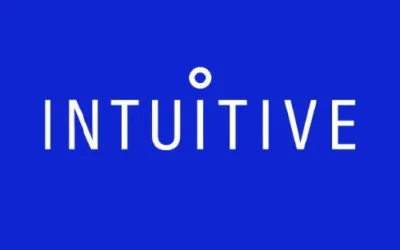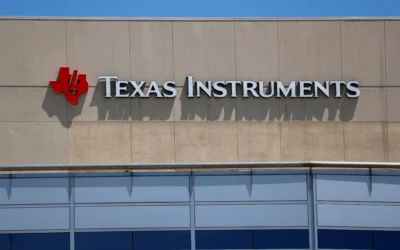Capital One: Navigating Economic Waters Amidst Consumer Challenges
As we move through 2023, one company drawing significant attention in the financial sector is Capital One Financial Corporation (COF). With an extensive portfolio in consumer banking and credit services, Capital One often serves as a bellwether for consumer sentiment and economic stability. Recent developments, including earnings reports and acquisitions, have painted a complex picture for investors and analysts alike.
Consumer Landscape: A Mixed Bag
The economy is currently witnessing a paradox in the consumer space. On one hand, consumer spending has remained resilient, driven partly by an overall buoyancy in wage growth and the aftermath of pandemic stimulus. On the other hand, rising interest rates and inflation concerns have started to strain household finances, triggering questions about the long-term sustainability of such spending.
Capital One’s Recent Earnings Report
As part of the quarterly earnings cycle, Capital One recently released its Q2 report, providing insights into both the company’s operational performance and consumer behavior. While the report showed a revenue increase driven by strong growth in net interest income, the company also experienced a swing to a loss, largely due to a significant acquisition—embedding Discover Financial Services into its operational model.
In the Q2 earnings report, Capital One’s net income was impacted by acquisition-related costs and increasing provisions for loan losses, reflecting a cautious outlook on consumer debt repayment. Analysts struggled to reach a consensus on the findings, noting that while Capital One’s stock registered gains amid these mixed results, underlying consumer pressures could dampen future performance.
Acquisition Impacts
The acquisition of Discover Financial marks a crucial strategic move for Capital One, with intentions to capture a larger share of the consumer market. Yet, absorbing Discover’s operational architecture and customer base poses substantial challenges. Integration costs and aligning different corporate cultures can detract from immediate profitability, raising eyebrows among stakeholders.
Wall Street Expectations
As Capital One prepares to provide Wall Street with a fresh look at its financial position, expectations are varied. Investors will be keenly focusing on the company’s strategy to manage elevated credit risk levels, especially as delinquency rates potentially rise among consumers struggling with higher debt costs.
Key metrics such as the Customer Acquisition Cost (CAC) and Lifetime Value (LTV) of new customers will be scrutinized, particularly in light of a competitive lending landscape. In a recent note to investors, the firm pointed out that while a resilient consumer sentiment is present, it is accompanied by a creeping sense of caution as households reconsider discretionary spending amid ongoing economic uncertainty.
COF Stock Performance: The Bigger Picture
Despite the losses recorded in the wake of the Discover acquisition, Capital One’s stock has proven resilient—at least in the short term. Investors remain optimistic about the long-term potential of the acquisition, believing it may enhance market positioning against competitors like JPMorgan Chase and Bank of America.
Year-to-date, COF stock has been on an upward trajectory, rebounding from previous lows and reflecting broader investor confidence in financial services stocks. Capital One’s robust credit card business continues to attract customers, while the company’s digital banking initiatives are gaining traction among younger consumers.
What Investors Are Watching For
Moving forward, several key indicators will shape the narrative around Capital One’s stock performance:
- Loan Performance: Investors will be looking for updates on delinquency rates and charge-off trends, particularly as economic pressures mount on consumers.
- Integration into Discover: Effective integration of Discover’s assets will be crucial for determining the acquisition’s success in driving long-term growth.
- Interest Rates: As the Federal Reserve maintains its course on interest rates, changes in lending costs will play a significant role in shaping consumer behavior.
- Market Competition: Capital One operates in a highly competitive environment, making it essential to monitor competitors’ responses to ongoing economic shifts.
The Consumer’s Role in the Economy
The resilience of Capital One’s stock can largely be attributed to consumer behavior. The consumer’s role in driving economic growth cannot be overstated, and as they navigate higher living costs, their credit usage trends will heavily influence financial institutions. While recent data suggests that consumers remain engaged with spending and credit, cautionary signs are beginning to emerge as inflation and economic pressures build.
Capital One is well aware of the balancing act required between fostering growth and navigating potential pitfalls associated with a consumer base facing challenges. As they prepare their next set of disclosures, investors will be parsing each word from management as they set expectations moving forward.
Conclusion: A Fork in the Road
In summary, Capital One stands at a critical juncture as it integrates Discover Financial while adapting to changing consumer dynamics. The success of these strategies and their subsequent impact on consumer credit performance will dictate the financial institution’s trajectory in the looming economic landscape.
Although recent stock gains indicate a level of investor confidence, the external pressures on consumers pose an ongoing challenge. It is an intricate dance between opportunity and caution, and how Capital One responds will be pivotal as 2023 unfolds. For investors, being mindful of both the potential rewards and risks will be essential as they consider Capital One’s place in their portfolios.







